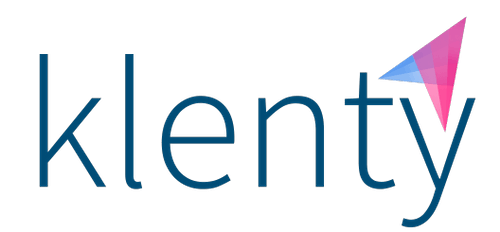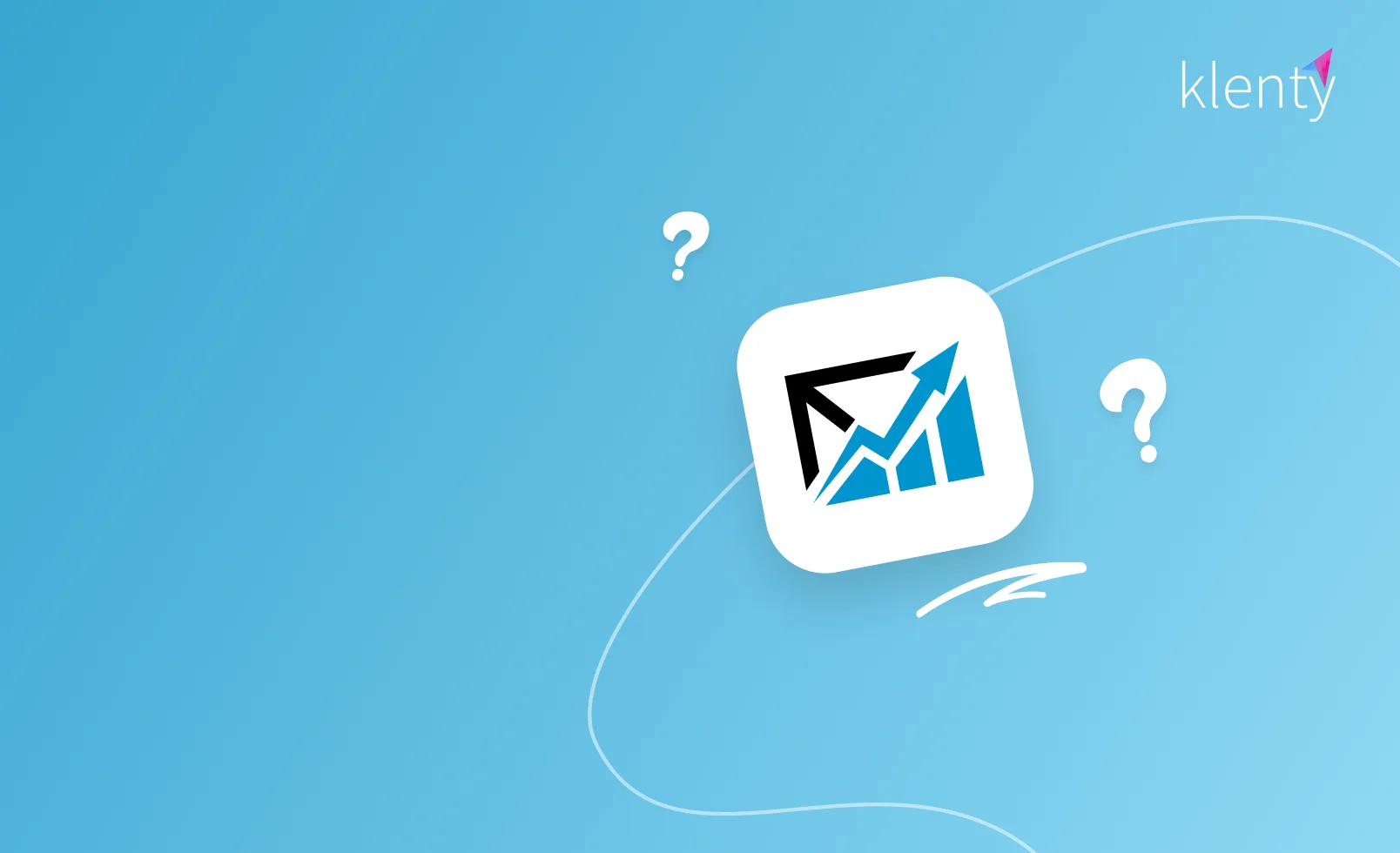You want to scale your cold email outreach for your team. But you’re not too sure which tool would best fit your team.
Then, you stumble upon Quickmail and you wonder if this is the tool you’re looking for.
If this is you, this is the place to be.
In this blog, we’ll break down:
- What is Quickmail?
- Quickmail’s pricing
- Quickmail’s features
- Pros and cons of Quickmail
- Quickmail’s alternatives
Let’s start at the top.
What Is Quickmail?
Quickmail is an email automation platform that helps reps to automate their follow-ups, scale their email outreach, and boost email deliverability.
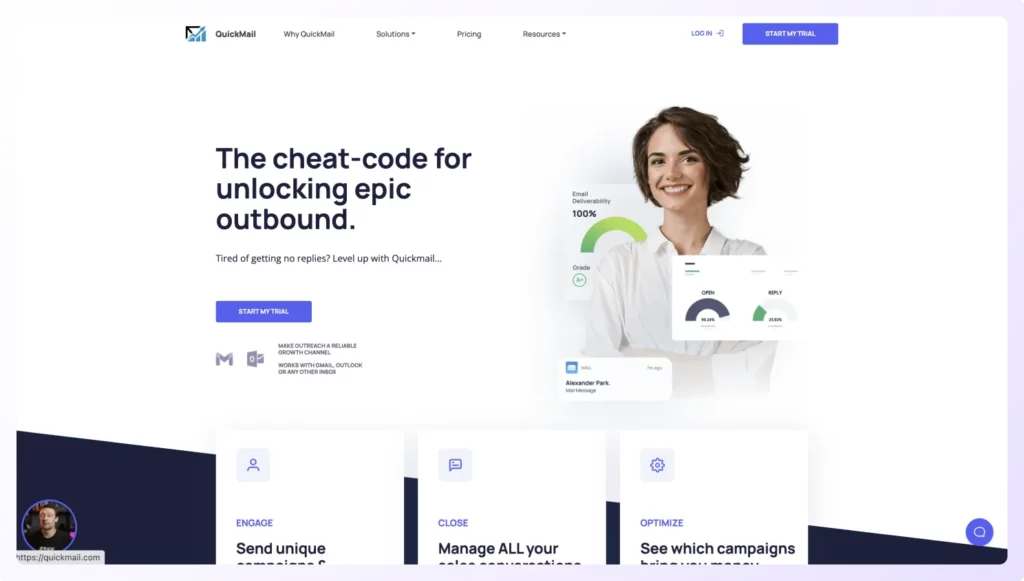
Founded in 2014, the platform also enables sales teams to run multichannel outreach campaigns, as reps can use emails, phone calls, SMS, and Slack to reach prospects.
Why Should You Use Quickmail?
You can use Quickmail if you’re looking to:
- Improve your email deliverability to ensure your emails land in prospect’s primary inbox.
- Scale your email outreach by using multiple inboxes per campaign to send bulk emails.
- Optimize your email campaigns with in-depth reports to get more positive replies.
- Automate your prospecting workflow, from importing prospects to follow-ups.
- Utilize channels like phone, SMS, and Slack on top of emails to reach prospects.
Who Can Use Quickmail?
- Sales representatives. Sales teams with an email-heavy approach to cold outreach will find Quickmail worthwhile. The platform comes with various email-focused features like built-in deliverability, automated follow-ups, optimized sending days and times, and hyper-personalization at scale with custom attributes and conditional send logic, which reps can use to book more meetings through their cold emails.
- Sales leadership. Through Quickmail’s reporting features like tracking opened emails by when they were sent, feedback on why leads unsubscribe, and sentiment analysis of replies, sales leaders can know what’s working and what’s not working in their cold email campaigns. With this information, they can rethink their outreach strategy to have more closed-won deals.
- Agencies. Using Quickmail, agencies handling multiple accounts for their clients can have all clients in one platform and shift between client profiles with just one click. What’s more, they can scale their email outreach and reach more clients by adding more than one inbox to their email campaigns.
- Demand generation teams. Quickmail helps demand gen teams to automate several manual tasks like prospect import, follow-ups, email verification, and CRM updates. Plus, the tool lets teams have several sender inboxes for one email campaign. With all this, demand gen can focus on the tasks that matter most, like researching and ideating creative campaigns.
Features of Quickmail
Here’s a look at all the features of Quickmail that makes it a valuable tool in the hands of its users:
- Inbox rotation. With Quickmail, reps can add multiple inboxes per email campaign to spread the load across several inboxes to increase the daily sending limit of a campaign without impacting email deliverability. Email-heavy teams can scale their cold email outreach through this feature. Also, spreading out email outreach to multiple inboxes ensures that emails stay under the radar of spam filters and land on prospect’s inbox.
- Campaign reports. In its campaign reports, Quickmail tracks cold emails that were opened by when they were sent, so that teams can optimize deliverability shifts, optimize scheduling, and improve performance. Plus, the reports also give the reason behind leads unsubscribing from email campaigns (not the right person or timing wasn’t right) to optimize campaigns better.
- Sentiment analysis. Quickmail analyzes the sentiment of your email replies to help reps understand quickly how prospects are reacting to the email campaigns. No more sifting through responses to know if they are good or bad. The platform automatically adds prospects to new follow-up campaigns based on reply sentiment.
- Multichannel outreach. Quickmail enables sales teams to run multichannel outreach campaigns, as reps can use emails, phone, SMS, and even Slack to reach prospects.
- Integrations. The platform supports bidirectional sync with 2 CRMs—HubSpot and Pipedrive—in addition to several other tools like NeverBounce, Hunter, Twilio and Calendly. On top of these, Quickmail supports Zapier integration with 1000s of apps used by sales teams.
- Unlimited split testing. Quickmail enables teams to carry out unlimited split tests for split-testing each part of their email campaigns—whether it’s one or two words or CTAs. With the relevant analytics on these, reps can find out exactly what drives more deals faster and adjust their campaigns accordingly.
- AI-driven automation of admin work. Using AI, Quickmail automates some of the administrative work that reps spend a lot of their time on, such as handling unsubscribe requests, detect and follow up with out-of-office responses and follow-up once they return, and starting a follow-up campaign based on a prospect’s reply.
Pricing
Quickmail has a 3-tiered pricing structure: Basic Plan, Pro Plan, and Expert Plan. Also, the platform offers a 14-day free trial.
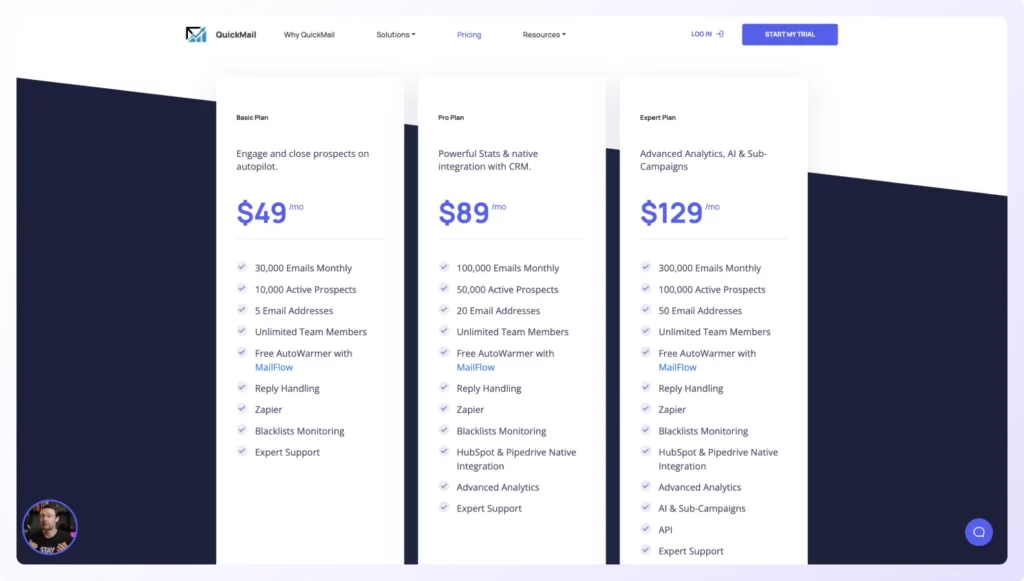
Basic Plan costs $49 per month and comes with 30,000 emails/month, up to 10 multichannel outreach campaigns, free email warmup, reply handling, and blacklists monitoring.
Pro Plan costs $89 per month and comes with native integration with HubSpot and Pipedrive CRMs, 100,000 emails/month, up to 20 multichannel outreach campaigns, and advanced analytics.
Expert plan costs $129 per month and comes with 300,000 emails/month and up to 50 multichannel outreach campaigns. In addition to the features in the Pro Plan, this top-tier plan provides Google-approved sending API, AI-driven features and automated follow-up based on response.
All 3 plans support inbox rotation, automatic email warmup, and unlimited team members.
Pros and Cons of Quickmail
In the previous sections, we’ve covered a lot of ground about Quickmail.
But, before you take a call on whether this is the sales engagement software your sales team needs, let’s lay out the advantages and disadvantages of Quickmail so that you can make a considered decision.
Pros of Quickmail:
- Strong deliverability at scale. Perhaps Quickmail’s strongest benefit is its inbuilt email deliverability feature for all kinds of email outreach, even for bulk email campaigns. The platform comes with free email warmup integration, blacklist monitoring, Google-approved sending API that mimics a human cadence, and real-time deliverability scores for every inbox with every account. Whether it’s 1000 or 100,000 emails, reps can rest assured that each email they send will reach prospects and not hit spam or damage their sender reputation.
- Supports a wide range of email providers. Quickmail supports Gmail, Microsoft Outlook, Amazon SES, PostMark, MailJet, MailGun, Zoho Email and any other email account using Simple Mail Transfer Protocol (SMTP) and Internet Message Access Protocol (IMAP).
- Best suited for bulk email outreach. With its inbox rotation feature, Quickmail functions as a platform that’s well-suited for email-heavy teams engaging in bulk cold email outreach. The upper limit for the number of emails that can be sent using this platform is as high as 300,000 emails per month, and the platform comes with robust email deliverability to ensure all emails reach their intended destination: prospect’s primary inbox.
- No upper limit on number of users. With QuickMail, teams can add as many users to their account to handle various aspects of cold email campaigns like setting up emails, updating copy and prospects, managing inboxes, and collecting data. All this at no extra cost.
- Low downtime. Quickmail’s downtime for maintenance only comes to an hour every year. The platform boasts a 99.99% uptime, making it reliable for its users as it isn’t prone to frequent outages and doesn’t impede pre-planned activities.
- Strong automation capabilities. Whether it’s importing prospects, scheduling cold email campaigns, or sending automated follow-ups, Quickmail lets teams automate a large portion of their workflow so that they have time for more meaningful activities. Quickmail also connects with a wide range of sales tools including Zapier, Aircall, Neverbounce, Twilio, and Calendly, making automation more accessible for teams irrespective of the tools they use.
Cons of Quickmail:
- Not suitable for mature sales processes. With its capabilities, Quickmail remains an email automation tool that’s primarily suitable for agencies and demand generation teams who are looking to scale their cold email outreach process. However, it isn’t a full-fledged and comprehensive sales engagement software suited for sales teams who deal with different intent stages and complex buying journeys of prospects.
- Basic multichannel capabilities. Quickmail’s biggest strength is also its biggest drawback—the fact that it’s too email-centric. Its available multichannel capabilities are quite limited for sales reps looking to utilize the full potential of channels apart from email using the same platform.
- Limited CRM integration. Quickmail provides bidirectional integrations with 2 CRMs—Pipedrive and HubSpot—and not with other CRMs popular in the market.
- Lack of goal-driven outreach capabilities. Quickmail can’t allow sales teams to set and track specific outbound goals every day (like contacting X prospects every day) to make every rep in the team accountable to achieve their overall targets.
- No in-built prospect data curation. Within its platform, Quickmail doesn’t enable sales teams to source accurate email and phone data for your ideal customer profiles and target prospects with unique needs based on industry or geography.
- No powerful dialing capabilities. Quickmail doesn’t allow sales reps to dial more than one number at a time, which could be disadvantageous for sales teams that depend heavily on outbound calls.
Klenty: The Best Alternative to Quickmail
Now that you have a balanced view of Quickmail after seeing its pros and cons, you might want to consider an alternative tool for high-performance sales teams that provides powerful sales engagement capabilities, enables you to systematically execute outreach across multiple channels, and lets you have everything you need to drive revenue in one platform.
Meet Klenty, a sales engagement platform that provides what sales teams need to close more deals and build more pipeline, all in a single platform.
Why is Klenty the best Quickmail alternative?
Klenty helps you leverage 5+ channels—calls, emails, LinkedIn, texts, and WhatsApp—to the full extent. Unlike Quickmail, you’ll be able to precisely target your prospects, wherever they are in their buying journey, using Klenty. You can plan, execute, and track their outreach across multiple channels, and persistently follow up at scale.
Here’s a taste of how Klenty can help your sales teams better than Quickmail:
- Deep integrations with 5 CRMs. While Quickmail integrates with only 2 CRMs, Klenty integrates deeply with the 5 best CRMs in the market—Salesforce, HubSpot, Microsoft Dynamics Sales 365, Pipedrive, and Zoho CRM—to ensure automated workflows and seamless sync. With Klenty, reps can focus only on building relationships and not on manual non-selling activities, irrespective of what CRM they use.
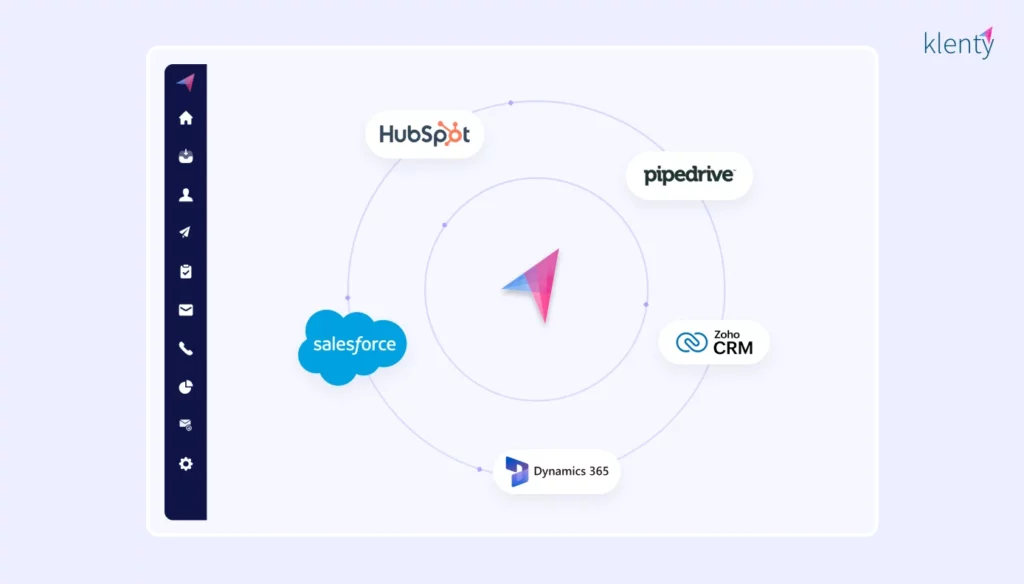
- Powerful dialer for cold calling. Klenty is a cold caller’s delight. Klenty’s powerful Sales Dialer enables parallel dialing, where you can place up to 5 calls simultaneously, all in one click to help you place 5x more calls. The dialer also logs all notes to your CRM, allows you to send voicemails in a click, and batch prospects according to their time zone.
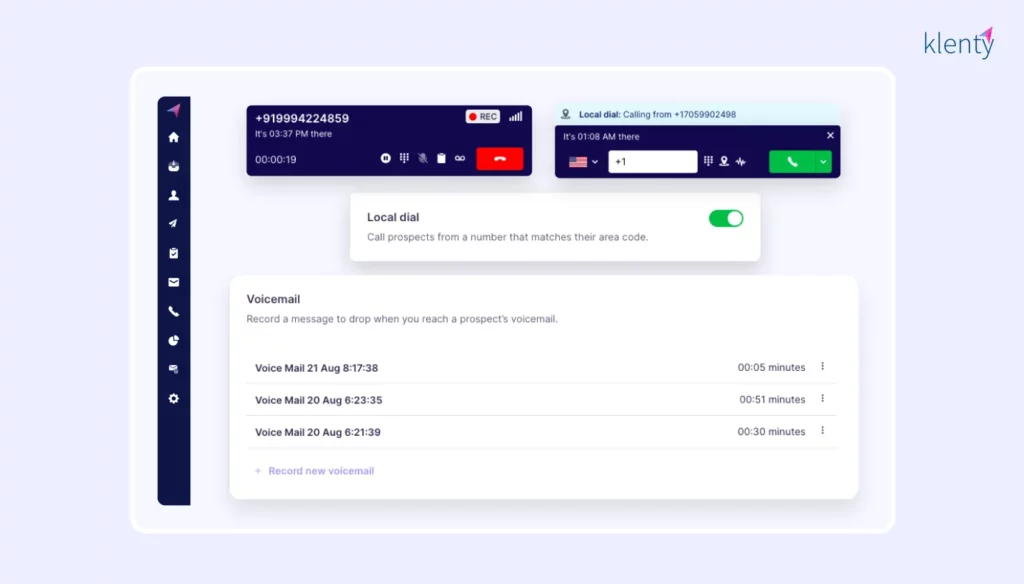
- Find, execute, book, close—all in one platform. With Klenty, you can find accurate contact data of ideal buyers using the prospecting data tool (Prospect IQ), execute systematic outreach at scale using the sales engagement tool, book meetings automatically with prospects with its meeting scheduler (Schedule IQ), and close more deals by analyzing your calls using its conversation intelligence tool (Call IQ). Effortlessly consolidate your tech stack to work with a unified data foundation for all the stages of the sales cycle.
- Intent detection. Klenty’s Cadence Playbooks helps you detect intent in prospects, establish the right next steps for every prospect, and prioritize prospects based on their intent. You gain visibility into where prospects are in their buying journey, move prospects from cadence to cadence based on intent, and execute precisely those activities which take each prospect towards a meeting. No more blind follow-ups.
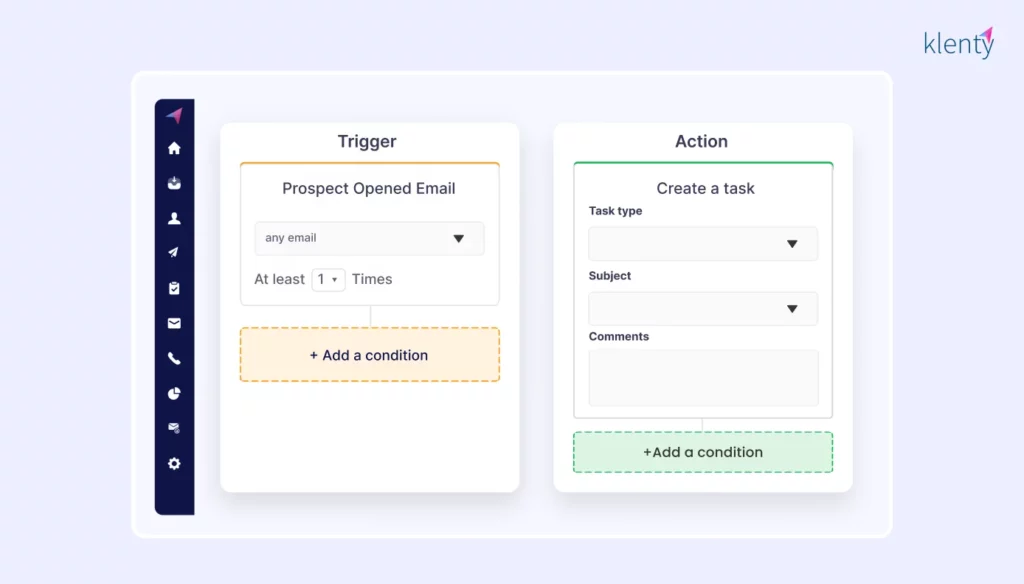
- Set clear goals for reps. With Klenty’s Goals and Reports, managers can set daily, weekly, and monthly targets for the sales team, get them to commit towards targets for activity, prospect coverage and conversion, and spot gaps as they happen (not after) to ensure timely interventions.
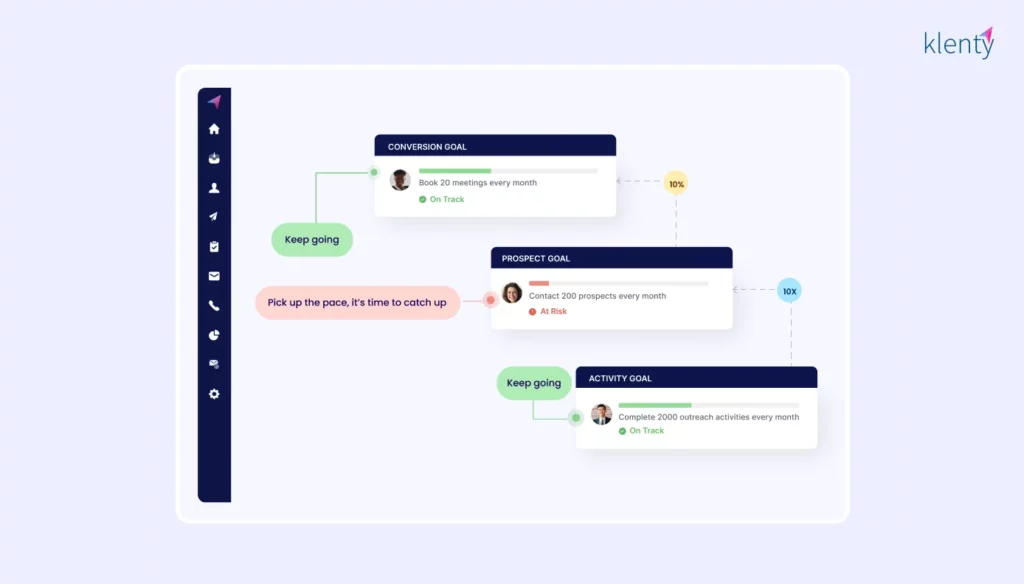
- Advanced email personalization. At Klenty, email personalization doesn’t stop with just placeholders. The ‘Liquid Templates’ feature uses dynamic formulas to change the content of your emails based on when the prospect receives and opens the email.
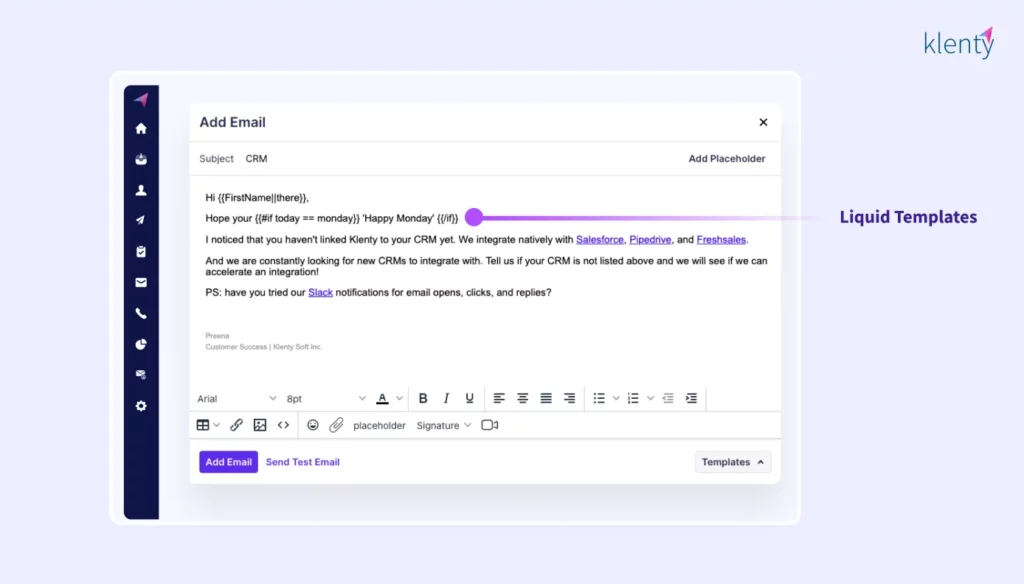
Who is Klenty best for?
Klenty is best for mature sales teams who know their ICP to perfection, have a set outreach strategy in place, and need a powerful sales engagement platform that flexes to their needs.
Whether your sales team contains 20 reps or 2000, whether your leads are inbound-driven or outbound-driven (or both) and whether your target market lies in the SMB or the enterprise sector, Klenty is adaptable and possesses the capabilities you need to execute your sales strategy.
Book a demo now to see how Klenty can help your sales team crush through pipeline goals!
